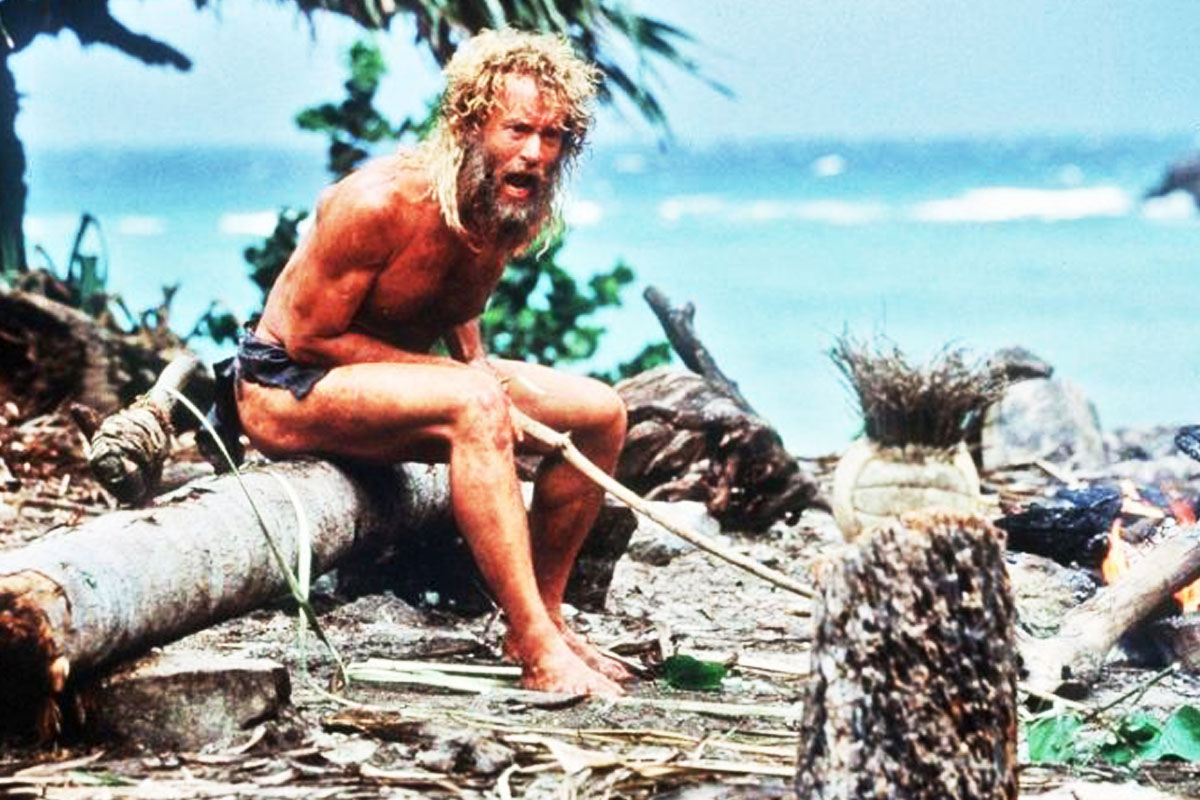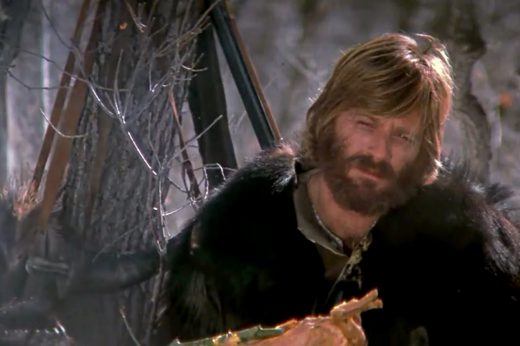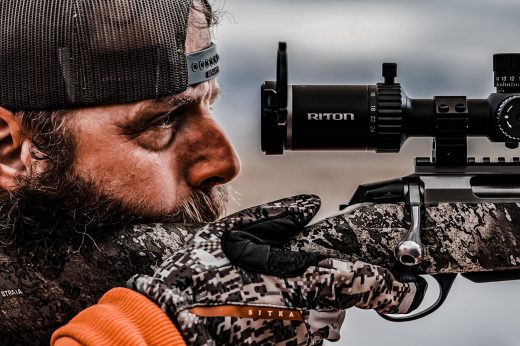Throughout history, humankind has chronicled gut-wrenching tales of heroic survival. We humans understandably have a fascination and obsession with staying alive. For these reasons and more, there is something wholesomely satisfying about survival movies. They can plot the entire spectrum of human emotion. They can evoke our greatest loves, and our greatest fears. Most of all, they illustrate the indomitable will of the human spirit to never give up.
Listed below are the top 10 Free Range American survival flicks. They capture that drama of elemental human survival against all odds.
10. 127 Hours (2010)
Directed by: Danny Boyle
Starring: James Franco
Most survival flicks are based on fictional events in dramatic worlds and inhospitable landscapes. But there are those that recall the unimaginable trials and peril of those facing real-life insurmountable odds, like 127 Hours, which chronicles the most significant, life-altering episode in canyoneer Aron Ralston’s life.
Growing up with a love for the wilderness, Ralston adopts a “10-foot-tall-and-bulletproof” attitude due to his exemplary outdoor skills. However, all of that changes on one ill-fated day in April on a trek through Bluejohn Canyon outside of Moab, Utah.
Ralston slips and falls while climbing the isolated canyon, leaving his right arm stuck and immobilized between a boulder and the crevice wall. With only the gear on his back and one free hand, the film depicts his next five heart-rending days as he hopes for his rescue and reflects on his life, family, and friends.
But as he begins to run out of energy, water, and rations, Ralston resorts to the unthinkable and takes matters into his own hand in order to survive. Unequivocally, the film can best be summed up with one line: Desperate times call for desperate measures.
9. The Book of Eli (2010)
Directed by: Albert and Allen Hughes
Starring: Denzel Washington, Gary Oldman, Mila Kunis
The Book of Eli is a mystifying post-apocalyptic survival film that follows the toils of an enigmatic vagabond named Eli (Washington) who has been traveling west toward the Pacific Coast decades after a nuclear apocalypse has made the world a wasteland.
Shrouded in mystery, Eli finds respite from the tumultuous outside world through a powerful tome believed to be the last of its kind and of great importance to the future of humanity. Unfortunately, the prized artifact makes Eli a frequent target to marauders, bandits, and thieves who have taken advantage of the postwar dystopian society that lacks law and order.
On his journey, Eli encounters an educated yet ruthless mayor of a small town named Carnegie (Oldman) who has long been in pursuit of the book he possesses. Rather than submit to Carnegie’s demands to give him the relic, Eli pledges to protect it at all costs and quickly finds himself an archnemesis in the process.
Continuously hounded by Carnegie and his henchmen, the solo-trekking Eli finds help where he might least have expected it — Carnegie’s daughter, Solaris (Kunis), who wishes to accompany Eli on his quest to the coast to fulfill his prophecy. But the constant calamity of a life of being hunted jeopardizes the mission at stake.
8. The Way Back (2010)
Directed by: Peter Weir
Starring: Jim Sturgess, Colin Farrell, Ed Harris
Inspired and loosely based on The Long Walk, a memoir written by Polish army lieutenant Slawomir Rawicz, The Way Back delves into an epic escape story of a myriad of prisoners from a Soviet gulag in the depths of Siberia.
After being imprisoned by the NKVD who believe him to be a spy, Polish army officer Janusz Wieszczek (Sturgess) meets a diverse cast of characters with whom he builds enough trust to plan an escape to Mongolia, including an American engineer named Mr. Smith (Harris) and a mischievous Russian delinquent named Valka (Farrell). Others join in on the plan, but facing the brutal elements of the Siberian landscape, their survival is in peril.
Weeks into their expedition, the group eventually reaches Mongolia, only to realize that they are still in danger as the area is under the control of Josef Stalin’s communist regime. With the continent of Asia war-torn from a variety of regional conflicts, the group must make a stark decision and travel thousands of miles out of their way in hopes of achieving their safety and freedom.
7. The Edge (1997)
Directed by: Lee Tamahori
Starring: Anthony Hopkins, Alec Baldwin, Elle Macpherson
Like many other survival films, The Edge takes place in Alaska, but the stark difference between this movie and many others of the genre is that it’s not the environment you have to worry about the most — but the people who are alongside you.
It all begins when billionaire Charles Morse (Hopkins), his wife Mickey (Macpherson), and photographer Bob Green (Baldwin) head to the great north for a vacation and photo shoot. But a celebration in paradise quickly sours into a fray of jealousy when Charles catches Mickey kissing Bob during one of their scheduled photo shoots.
That event leads to Charles jokingly asking Bob how he plans to kill him on a flight to meet a local Alaskan man for photographs of their journey, but before Bob can reply, their airplane crashes into a lake after hitting a large patch of birds, with most all their key possessions, including Charles’ survival book, being lost in the wreckage. Go figure.
Despite tensions already running high due to Charles’ suspicion that Bob is having an affair with his wife, they realize they must work together in order to survive the wild — and moreover, a large Kodiak bear that is stalking them every step of their way toward civilization.
It’s man versus man, it’s man versus wild, and it’s one hell of a survival cliffhanger. Can the two men put aside their suspicions and differences and make it out alive? Or will their lack of wilderness experience and inability to get along send them to an early grave?
6. Apollo 13 (1995)
Directed by: Ron Howard
Starring: Tom Hanks, Ed Harris, Kevin Bacon, Bill Paxton
Offering a change of pace compared with the other films listed, Apollo 13 is a dramatic documentary that recalls the historical events of NASA’s aborted 1970 mission to the moon.
The film closely analyzes the storyline and preparation of astronauts Jim Lovell (Hanks), Fred Haise (Paxton), and Jack Swigert (Bacon), whose aspirations are at an all-time high to be the third group of men to walk on the moon. However those hopes quickly fade 205,000 miles away in outer space when an oxygen tank explodes, causing tremendous damage to their ship and depleting their on-board oxygen supply, sparking the infamous callback phrase to NASA headquarters: “Houston, we have a problem.”
With an entire nation watching, it’s up to mission flight director Gene Kranz (Harris) and NASA’s best and brightest to ensure the return of Lovell, Haise, and Swigert with failure not being an option.
5. The Omega Man (1971)
Directed by: Boris Sagal
Starring: Charlton Heston
The second film adaptation of Richard Matheson’s famed novel I Am Legend, The Omega Man is a post-apocalyptic thriller that follows the account of Dr. Robert Neville (Heston), who is believed to be one of the last survivors of a biological war between Russia and China that has vanquished most of humanity.
Living among the ashes of what was once Los Angeles, Neville soon realizes he is not alone and must contend with a horde of ghostly pale mutants who have made him a priority target due to his creation of a vaccine that can save humanity. Hell-bent on destroying Neville and what little is left of civilization, the mutants, better known as “The Family,” are willing to undertake any means necessary to do so.
Can one man save humanity or will the ghastly villains inherit the earth?
4. Rescue Dawn (2006)
Directed by: Werner Herzog
Starring: Christian Bale
Few tales of survival are as harrowing and suspenseful as those of people who endure the brutality of war. Rescue Dawn epitomizes that by depicting the real-life events and struggles of German American pilot Dieter Dengler (Bale) and his fellow prisoners of war during the Vietnam War.
When a deep air-support mission in February of 1966 goes awry, Dieter’s plane is shot down over Laos by Pathet Lao sympathizers. Over the course of the next half year, he and his fellow POWs (from multiple walks of life) are subject to abhorrent torture and abuse by their captors. Though initially skeptical of Dieter’s vow to escape, upon realizing they are to be killed anyway, the group of POWs agree to Dieter’s elaborate escape plans.
This film isn’t for the faint of heart. What transpires over the two-hour-and-six-minute film will have watchers sitting at their edge of their seats with anticipation. The movie’s unexpected outcome serves as a testament of the unwavering strength, fortitude, and spirit of America’s military personnel and individuals willing to do whatever it takes to survive in the face of sheer evil.
3. The Grey (2011)
Directed by: Joe Carnahan
Starring: Liam Neeson
Set in the remote Alaskan wilderness, The Grey is a haunting film that follows the life of John Ottoway (Neeson), a skilled marksman making a living hunting down wolves that threaten oil drilling operations in the area.
Ottoway, already in a perilous state of mind due to being distanced from his wife, is at his wit’s end and losing his sanity due to the taxing way of life in the wild north. At the end of his contract with the oil company, Ottoway and his co-workers embark on a flight back to the mainland, but their plane crashes in the middle of nowhere.
Struggling to survive, the remainder of the crew have to deal with existential circumstances in a dramatic and ironic turn of events. Once the hunter of gray wolves, the survivors become hunted by the gray wolves. What ensues in The Grey perfectly encapsulates the daunting theme of man versus nature, putting Ottoway and his friends’ survival skills and willpower to the ultimate test.
2. The Road (2009)
Directed by: John Hillcoat
Starring: Viggo Mortensen, Kodi Smit-McPhee
Based on the Cormac McCarthy novel, The Road offers a grim depiction of the United States after an apocalyptic event leaves the country completely devastated ecologically.
The story follows the journey of a father (Mortensen) and son (Smit-McPhee) who are traveling the barren wasteland with nothing but a rickety cart to hold the few possessions they have left. Every day is a perpetual grind, and the lack of basic necessities in a dog-eat-dog world turned to absolute anarchy leads the duo to head south in hopes of a better life with better access to resources. While outsiders and savages post a significant threat to their ultimate goal, the greatest fear for both of them is having to resort to cannibalism to survive or to become cannibalized.
The Road offers significant moral and philosophical undertones of guidance in a lawless world that offer a vast layer of complexity alongside a stalwart cinematographic effort. Moreover, a significant takeaway viewers can come to understand is the importance of reverie and happy memories when obstacles seem too great to overcome.
1. Cast Away (2000)
Directed by: Robert Zemeckis
Starring: Tom Hanks, Helen Hunt
At some point in our lives we have all been asked, “What five items would you bring with you to survive on a deserted island?” It’s almost a virtual certainty that nobody would have had a volleyball on the list, that is, unless you were Tom Hanks’ incarnation of FedEx systems analyst Chuck Noland in Cast Away.
In the midst of Christmas, Noland is summoned by his employer to respond to an issue in Malaysia. As if leaving family on the holiday for work wasn’t bad enough, his fortunes take a significant turn for the worse when his plane crashes in the remote Pacific Ocean, rendering him the only survivor.
Accustomed to a working world based on the importance of numbers, times, and deadlines, Noland’s entire psyche is turned upside down, realizing that none of those things matter in his newfound forlorn circumstances on an uninhabited island.
What makes Cast Away one of the best survival films of all time is its introspective focus on the importance of mental fortitude to persevere against all odds. Even if it takes befriending and personifying a volleyball, better known as “Wilson,” in order to keep on going. Moreover, it’s symbolic of the paramount need humans have for connection and socialization to bring fulfillment to our lives.
Read Next: The 8 Best ‘Cabin in the Woods’ Movies of All Time








Comments